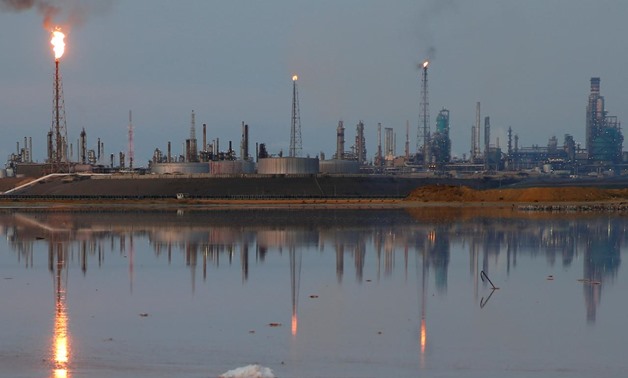
A general view of the Amuay refinery complex, which belongs to the Venezuelan state oil company PDVSA, in Punto Fijo, Venezuela November 17, 2016. REUTERS/Carlos Garcia Rawlins/File Photo
SINGAPORE - 26 November 2018: Oil prices on Monday clawed back some losses from a nearly 8-percent plunge the previous session, but Brent failed to hold above $60 per barrel amid generally weak financial markets.
Front-month Brent crude oil futures LCOc1 had risen by 96 cents, or 1.6 percent, to $59.76 per barrel by 0745 GMT.
U.S. West Texas Intermediate (WTI) crude futures CLc1 were up 62 cents, or 1.2 percent, at $51.04 per barrel.
The gains partly made up for Friday’s selloff, which traders have already dubbed ‘Black Friday’.
Reacting to Friday’s falls in Brent and WTI, China’s Shanghai crude futures on Monday ISCcv1 fell by 5 percent, hitting their daily downside-limit.
Judging by exchange data, traders are preparing for more price falls.
Managed short positions in front-month WTI crude futures, which would profit from further price declines, have surged from record lows in July to the highest number of short positions since October 2017.
What’s more, the number of puts - which give a trader the option though not obligation to sell a financial instrument at a certain price - in February Brent crude oil futures at $55 LCO5500N9 and $50 per barrel LCO5000N9 has surged to record levels since October.
The downward pressure comes from surging supply and a slowdown in demand growth which is expected to result in an oil supply overhang by next year.
“2019 will be a choppy year for the oil market as questions surrounding the prospect of a slowing global economy and a supply surplus are expected to increase,” analysts at Fitch Solutions said on Monday.
Fitch said that even an expected supply cut led by the Organization of the Petroleum Exporting Countries (OPEC) following an official meeting on Dec. 6 “may not be enough to counteract the bearish forces”.
WIDER DOWNTURN
Oil markets are also being affected by a downturn in wider financial markets.
“2018 clearly marked the end of the 10-year Asia credit bull market due to tightening financial conditions in Asia (especially China), and we expect this to remain the case in 2019,” Morgan Stanley said in a note released on Sunday.
“We don’t think that we are at the bottom of the cycle yet,” the U.S. bank said.
Oil markets have also been weighed down by a strong U.S.-dollar .DXY, which has surged against most other currencies this year, thanks to rising interest rates that have pulled investor money out of other currencies and also assets like oil, which are seen as more risky than the greenback.
“Anything denominated against the USD is under pressure right now, said McKenna.
Another risk to global trade and overall economic growth is the trade war between the world’s two biggest economies, the United States and China.
“The U.S.-China trade conflict poses a downside risk as we forecast the U.S. to impose 25 percent tariffs on all China imports by Q1 2019,” U.S. bank J.P. Morgan said in a note published on Friday.

Comments
Leave a Comment